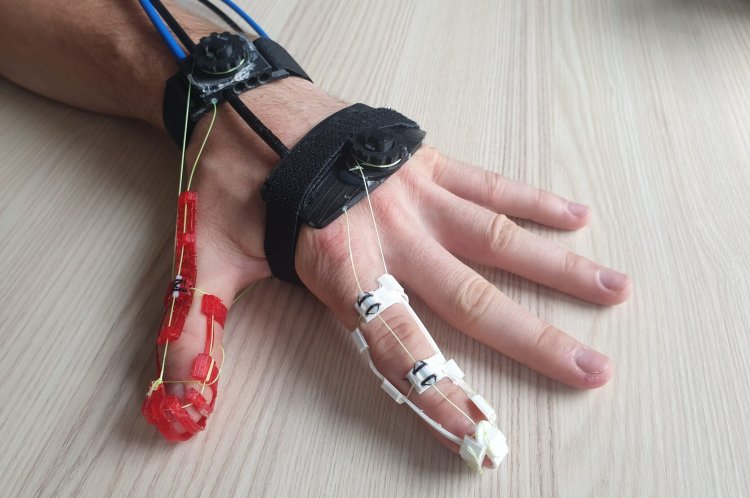Study discovers how to restore hand function with neuro-orthosis

Washington DC, US: Patients with restricted hand function will soon be able to lead independent lives because of a clever neuro-orthosis.
Prof. Dr Alessandro Del Vecchio, a neuroscientist at Friedrich-Alexander-Universitat Erlangen-Nurnberg (FAU), is working on this goal in two new projects. During the next three years, the primary emphasis of this study will be wireless measurements of muscle impulses and the application of artificial intelligence (AI) to perform the required motions.
Around 50 million people worldwide suffer from neuromotor impairments to their hands caused by spinal cord injury or stroke. These impairments cause severe limitations to patients in managing their daily lives. "Medical technology has made huge progress during the last few years. For example, studies have shown that neuro-orthoses can move the hands of healthy people," says Prof. Dr. Alessandro Del Vecchio, head of the Neuromuscular Physiology and Neural Interfacing Laboratory (N-squared Lab) at FAU. "However, much research and development still needs to be done in terms of fine motor skills, for example to enable movement of individual fingers of paralyzed hands."
In collaboration with Dr. Matthias Ponfick, Head of Department at the Paraplegic Center of Krankenhaus Rummelsberg and Prof. Dr. Thomas M. Kinfe, Head of the Functional Neurosurgery and Stereotaxis Department of Universitatsklinikums Erlangen, Del Vecchio intends to push forward research in this area and develop solutions that will allow patients to live independent lives again. "The neuronal connection between the brain and muscles is still intact in most patients," explains Dominik Braun, research assistant at the N-squared Lab. "This means that the muscles react to signals, but are unable to move the affected part of the body." This is the starting point of the research team from Erlangen. In the NeurOne collaborative research project, they aim to develop a flexible and wearable neuro-bandage that measures the electric activity of the skin and can thus measure even the smallest of muscle movements. This is where a new innovative printing method will be used. The electrodes and circuit boards can be printed in extremely thin layers on conventional textiles and can thus be integrated into a t-shirt, for example. The sensor system is complemented by a system known as a brain-computer interface that uses AI to decode the recorded neuronal signals and deduces the patients' intended movements. According to Braun, "NeurOne creates the connection to mechanical systems that support patients with movement in their everyday lives."
The GraspAgain project gives an idea of how such mechanical support systems could look. In conjunction with the Institute for Factory Automation and Production Systems (FAPS) at FAU, the N-squared Lab wants to develop a neuro-orthosis that will restore hand function to such an extent as to enable patients to carry out more than 90 percent of everyday tasks independently. "Our aim is to move the fingers and the thumb of the hand independently of each other and with high levels of strength," explains Dominik Braun. The researchers hope to achieve this by using a system of pull cords that are attached to a soft and extremely light finger cot. The electronic control system, actuators and power supply will be integrated as a compact unit in a wheeled walker, wheelchair or backpack so that users remain mobile. "The neuro-orthosis is combined with our brain-machine interface, which determines patients' intended movements in four degrees of freedom," said Alessandro Del Vecchio.















































